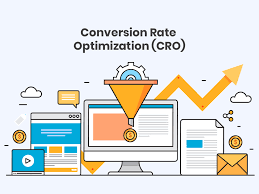Unlocking the Secrets to a Successful Website: Maximising Your Site’s Potential
The Importance of Having a Well-Designed Website
In today’s digital age, having a well-designed website is essential for any business or individual looking to establish a strong online presence. A website serves as the virtual storefront for your brand, offering visitors a glimpse into what you have to offer and why they should choose you over competitors.
A well-designed website not only attracts visitors but also keeps them engaged and encourages them to explore further. Here are some key reasons why investing in a professionally designed website is crucial:
First Impressions Matter
Your website is often the first point of contact between your business and potential customers. A visually appealing and easy-to-navigate site creates a positive first impression, instilling trust and credibility in visitors.
Reflects Your Brand Identity
Your website should reflect your brand identity, including your logo, colour scheme, and messaging. Consistent branding across all elements of your site helps reinforce brand recognition and fosters brand loyalty.
Enhanced User Experience
A well-designed website ensures a seamless user experience, making it easy for visitors to find information, navigate pages, and complete desired actions such as making a purchase or contacting you. User-friendly websites lead to higher conversion rates and customer satisfaction.
Mobile Responsiveness
In an era where mobile devices dominate internet usage, having a mobile-responsive website is non-negotiable. A responsive design ensures that your site functions optimally on all devices, providing users with a consistent experience regardless of the screen size.
SEO Benefits
A well-structured website with quality content is favoured by search engines like Google, leading to improved search engine rankings. Incorporating SEO best practices into your site design can help drive organic traffic and increase visibility online.
Competitive Advantage
In a competitive online landscape, having a professionally designed website sets you apart from competitors with outdated or poorly constructed sites. A modern and visually appealing site signals to customers that you are committed to quality and professionalism.
Overall, investing in a well-designed website is an investment in the success of your business or personal brand online. By prioritising user experience, branding consistency, mobile responsiveness, SEO optimisation, and staying ahead of the competition, you can create a powerful online presence that drives growth and engagement.
Understanding ‘Site’: A Comprehensive Guide to Definitions, Usage, and Linguistic Insights
- What is the meaning of siting?
- What are some synonyms for site?
- What is the difference between cite and site?
- What is the origin of the word site?
- How do you use the word site?
- What is another word for site or place?
- Do you mean by site?
- What is site simple words?
What is the meaning of siting?
“Siting refers to the careful selection and placement of a particular object, structure, or facility in a specific location. It involves considering various factors such as environmental impact, accessibility, functionality, and aesthetics to determine the most suitable position for the intended purpose. Proper siting is essential in urban planning, architecture, infrastructure development, and various other fields to ensure optimal use of space and resources while minimising potential negative consequences.”
What are some synonyms for site?
When seeking alternatives for the term “site,” one may consider using synonyms such as “location,” “placement,” “position,” “venue,” or “spot.” These words can be utilised interchangeably with “site” depending on the context in which they are being used, offering variety and flexibility in communication.
What is the difference between cite and site?
One frequently asked question regarding language usage is the distinction between “cite” and “site.” While both words sound similar, they have different meanings and contexts in which they are used. “Cite” is a verb that means to refer to a source or quote as evidence or authority in a written work. On the other hand, “site” is a noun that refers to a specific location or place, often used in the context of construction, archaeology, or web design. Understanding the subtle differences between these two words can help ensure clear and accurate communication in writing and conversation.
What is the origin of the word site?
The word “site” originates from the Latin word “situs,” meaning “position” or “location.” Over time, the term evolved to encompass not just physical locations but also virtual spaces on the internet. The concept of a site as a designated area or place has been integral to various fields, including architecture, urban planning, and technology. Today, when referring to a website or online platform, the word “site” embodies the idea of a specific digital location where information, services, or products are presented and accessed by users worldwide.
How do you use the word site?
The word “site” can be used in various contexts depending on the intended meaning. In general, “site” refers to a specific location or place, often associated with a particular purpose or activity. For example, it can denote a construction site where building work is taking place, a historical site of significance, or an online website where information is accessed. Understanding the context in which the word “site” is used is crucial for interpreting its meaning accurately in communication.
What is another word for site or place?
When seeking an alternative term for “site” or “place,” one commonly used synonym is “location.” This versatile word effectively conveys the idea of a specific area or position, making it a suitable replacement in various contexts, whether referring to a physical site, an online platform, or a designated place of interest.
Do you mean by site?
When individuals inquire, “What do you mean by site?” they are often seeking clarification or a definition regarding the context in which the term “site” is being used. In the realm of digital technology and web development, a site typically refers to a location on the internet where specific content is housed, such as a website or web page. Understanding the nuances of this term can help individuals navigate online platforms effectively and engage with digital content in a more informed manner.
What is site simple words?
In simple terms, a site refers to a specific location or place, especially in the context of the internet. On the web, a site commonly refers to a collection of web pages that are related and accessible through a unique domain name. Websites can serve various purposes, such as providing information, selling products or services, sharing content, or connecting people with similar interests. Essentially, a site is like a virtual space where users can visit to access and interact with the content or services it offers.

